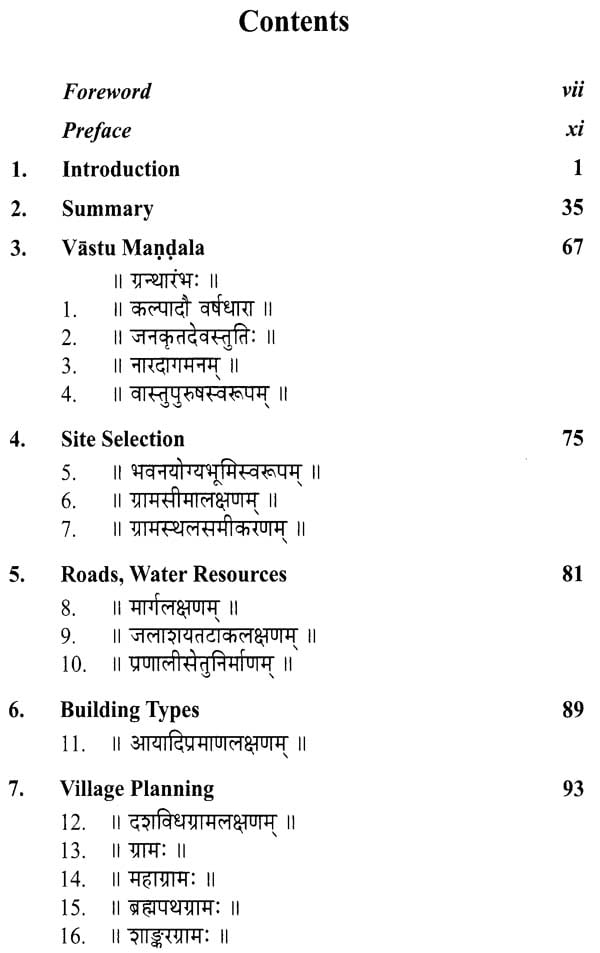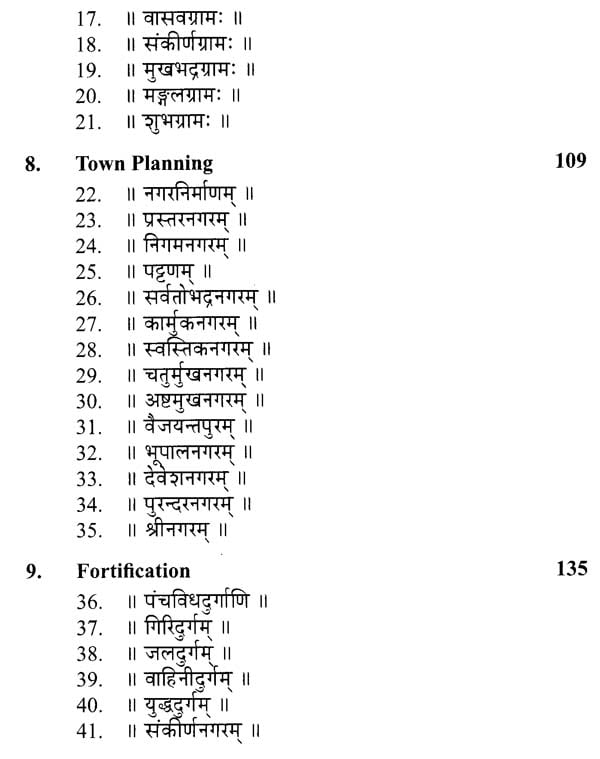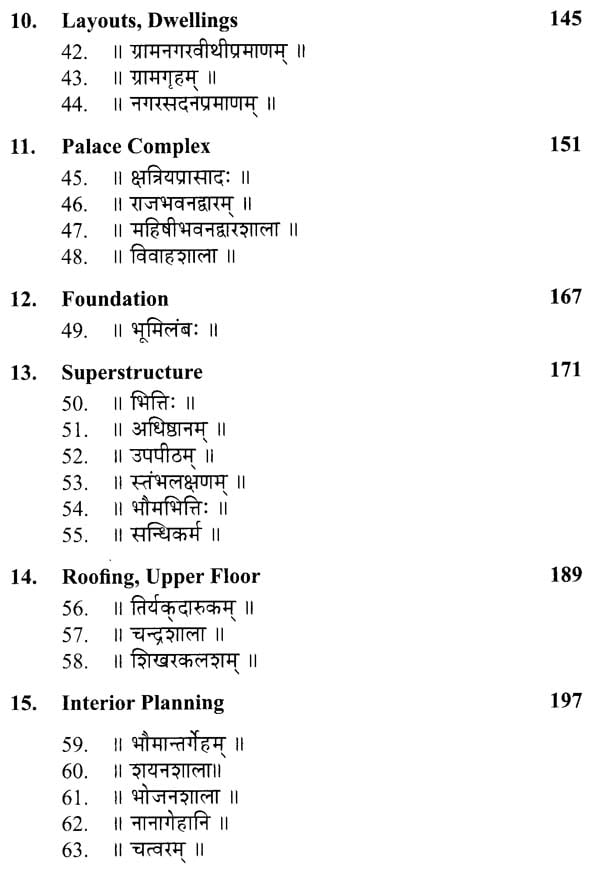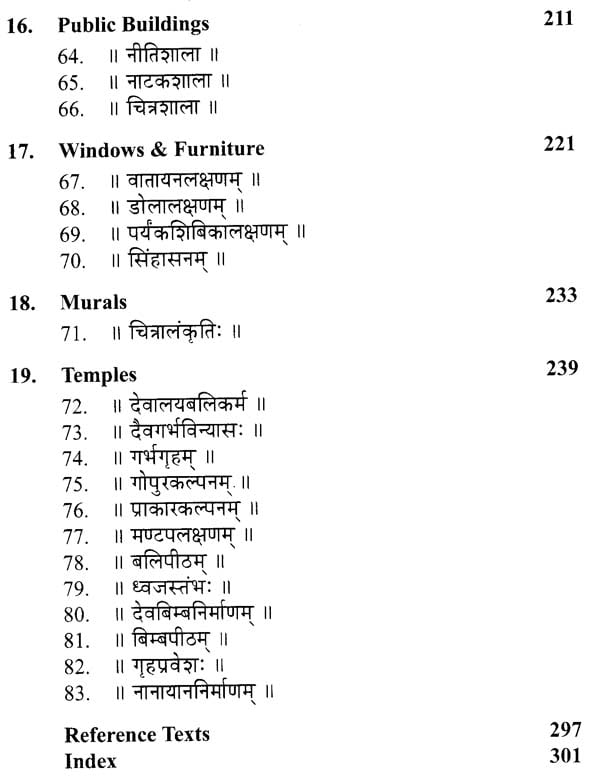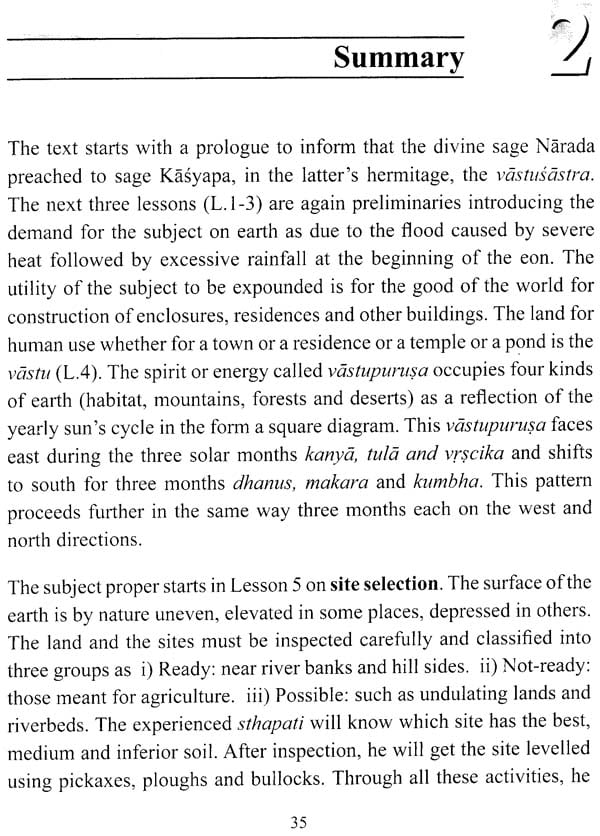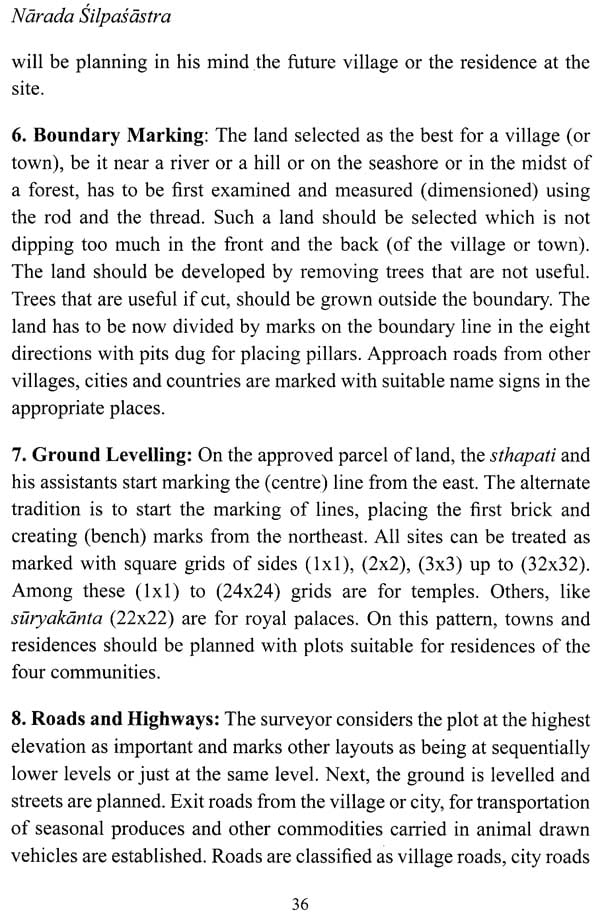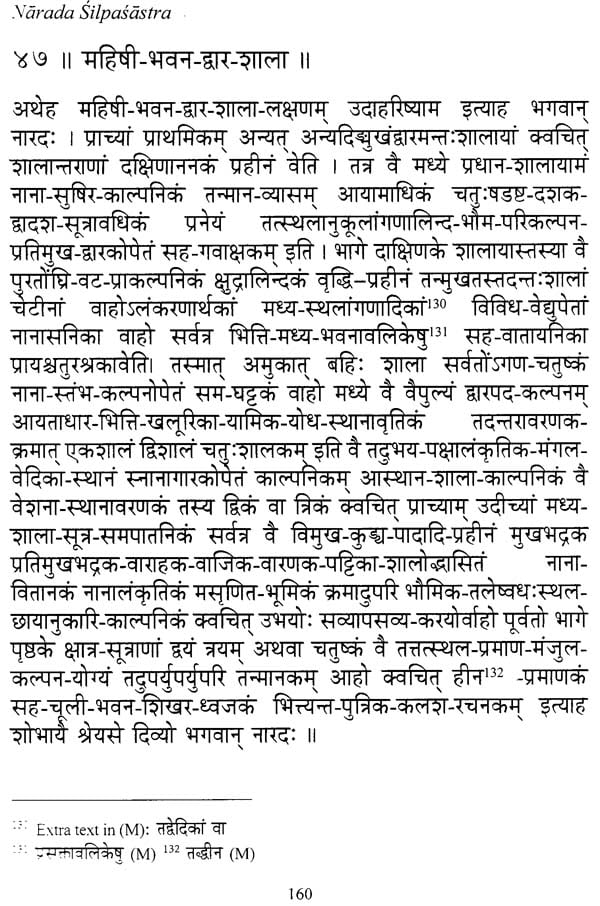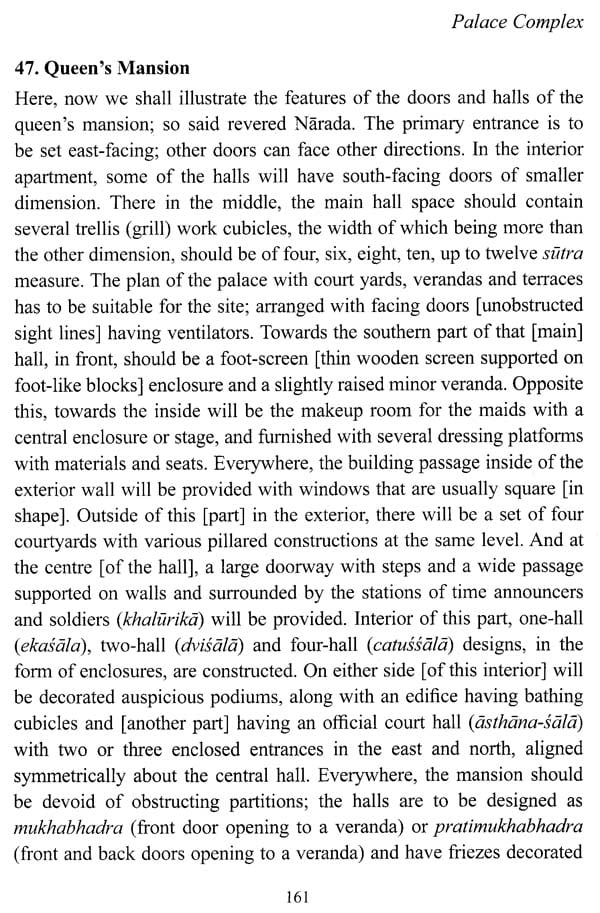About the Book India has a rich and ancient tradition of building cities, monuments, towers, dams, bridges, reservoirs, step-wells and other civic infrastructure besides beautiful temples and palaces. Some of the present day highways are aligned on ancient tracts that were first laid several centuries ago. There are several ancient Sanskrit texts known as either vastusastra or Silpasastras that describe some aspects of residential buildings, temples and other structures. The present text, attributed to the authorship of Narada, the legendary sage and polymath, is a vastusastra text, although traditionally the manuscripts are titled Narada Silpa sastra. This text, in terse technical Sanskrit prose describes - site selection, planning of villages and cities, construction of roads, dams, lakes, foundation, basement, and super structure of private and public buildings including marriage halls, art galleries, theatres and temples. Internal evidences point out that in its present form, this text originated at a time when weekdays were not in vogue, but acquired additional material at a later period and fixed in South India around 6th century CE.
About the Author Prof. R.N. Iyengar himself a renowned Civil Engineer, helped by two reputed Sanskrit scholars, has for the first time brought out this unique Sanskrit text on the theory and practice of Architectural Civil Engineering in ancient India with Introduction, translation, notes and figures.
Foreword A widespread misconception about Sanskritic literature is that it is mostly concerned with philosophy, poetry, spirituality, religion, and the arts. No doubt, it did produce countless texts in those fields, some of enormous length, but to limit it to them would be doing it an injustice. Sanskrit was an instrument of expression in almost every conceivable field: grammar, poetics, architecture, agriculture, botany, zoology, medicine, chemistry, metallurgy, polity, ethics, and countless miscellaneous topics from the science of omens to the treatment of diseased crops or horse training - the list is almost endless.
Since the nineteenth century, texts of classical Indian mathematics and astronomy have at least received some attention, their contributions increasingly recognized in recent decades. Indeed, Professor R.N. Iyengar has distinguished himself with several path-breaking research papers on pre-Siddhantic astronomy, eclipses, comets and meteors, and with the landmark publication in 2013 of a reconstruction of an ancient text on astronomy and natural sciences, Parasara tantra, which so far was available only through scattered extracts. Paradoxically, other scientific or technical fields remain largely unexplored, civil engineering perhaps most of all, despite its great importance.
Why is that a paradox? Because India's tangible heritage offers a loud testimony to the excellence of civil engineering skills, from the meticulous planning and execution of Harappan cities, wells, reservoirs, sanitation systems to the breath taking rock-cut structure of the Kailasanatha temple at Ellora, the stepwells of Gujarat and Rajasthan, irrigation devices or Delhi's rust-resistant pillar.
Preface The sheer beauty of the sculptures around the outer periphery of the Konark temple keeps one bewitched for a long time before one starts wondering what engineering methods had been followed to plan and execute such a grand edifice. Such was my experience when as Director of the Central Building Research Institute of CSIR I led a group of scientists in 1998 for conducting a geo-radar survey of the Konark temple site. Being interested in the history of science and engineering in India, I started collecting literature on the temple, when I came across the monograph New Light on the Sun Temple of Konarka by Boner, arma and Das which includes four ancient manuscripts that contain the construction history of the 13th century temple, several engineering drawings on palm leafs and a diary that has kept partial account of the men, money and material at the project site. Sanskrit literature is rich in texts on architecture and iconography but writings that delineate the heritage of civil engineering history, such as the above one, are rare. It is quite likely large constructions should have followed similar methods of record keeping, but such manuscripts might not have survived the vagaries of nature.
Engineering heritage is not just about buildings and architecture, but includes construction of water resources for which the country is equally famous. Research scholars interested in indigenous methods of water management look for texts in Sanskrit on lakes and ponds. Thus, it was a pleasant surprise when a student from IIT Delhi approached me with the manuscript of Mirada Silpasastras (NSS) and wanted to know whether the text has a chapter on dams and bridges. Indeed, the text had a chapter on check-dams but not on bridges.
Book's Contents and Sample Pages
